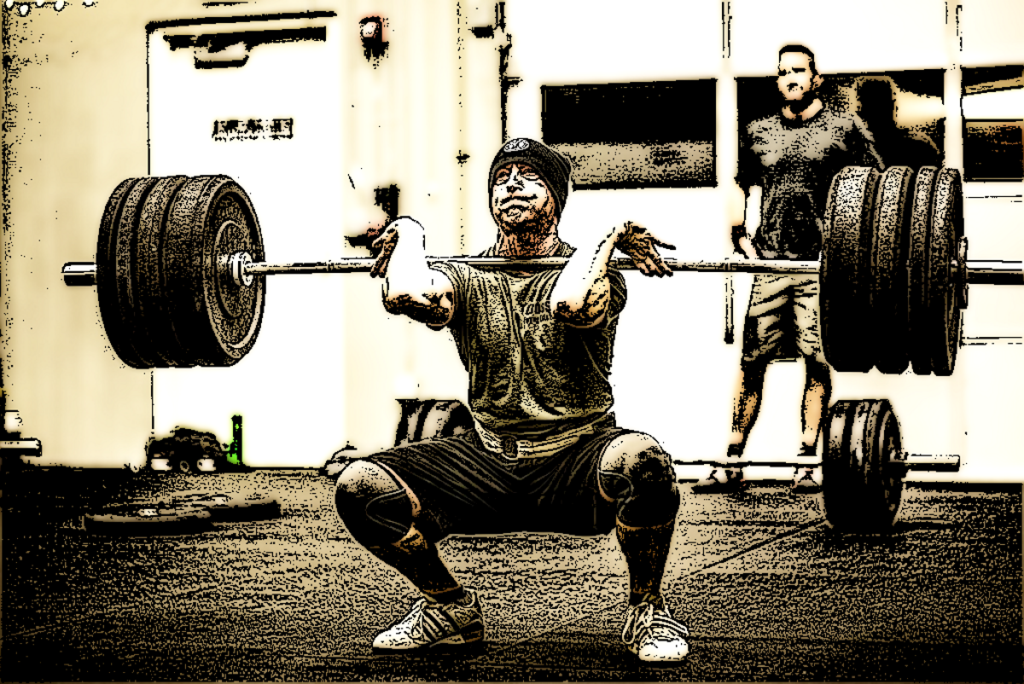Athletes inside the weight room should ask, “Why?”
Why are we doing this lift? Why are we doing this many sets? Why do I do it like this when I saw someone else doing it differently?
These are just some of the many common questions an athlete might ask a coach. “Because we’ve always done it this way” or “Because this is the way I was taught to do it” are some of the lamest answers to these sort of questions. Why? One, they don’t help the athlete actually understand the purpose of what they’re doing. And two, it’s reflective of a rigid methodology that isn’t open to modern changes in sports performance training.
Relating to that, sometimes upgrading a classic exercise is as simple as making a tiny tweak in its execution. These slight tweaks help make the exercise more effective or more appropriate for the athlete. Below are three examples of minor exercise modifications that can produce a big improvement in results.
1. Shrug Your Front Squats
Front Squats are usually an integral piece of the training puzzle, especially in high school college. They’re a great progression up from the Goblet Squat and an awesome front-loaded option for those looking to squat heavy without direct spinal loading.
One of the most common cues for the Front Squat is to “keep your elbows up,” which is a phenomenal tip. However, sometimes the elbows drop as a result of shoulder position, not elbow position. A heavy Front Squat can cause some slight T-spine flexion, which will then cause an athlete’s shoulders to roll slightly forward and their elbows naturally follow suit.
One cue I’ve found to be effective for fixing this issue is to start each rep with a slight shrug. Now the shoulders elevate and retract prior to each rep, so if you keep that position, you get a nice bonus upper-back activation. If you slightly come out of that position, you go back to a “neutral” position where your elbows are still forward and have yet to drop, simply because they started a little bit higher. The above video shows an example of this cue, which was inspired by STACK expert Tony Gentilcore.
2. Elevate the Ball on Hamstring Curls
My favorite way to use a Stability Ball is for Hamstring Curls, and it’s really no contest. This hamstring isolation exercise not only fires up the posterior chain, but presents a total body core challenge, as well.
The biggest mistake I see with the Stability Ball Hamstring Curl is an inability to achieve full hip extension. I’ve also noticed that athletes who’ve mastered the basic movement rarely know how to make the exercise more difficult.
I found one tiny tweak that addresses both issues, so it can be used to both teach and progress the exercise. The fix? Elevate the stability ball. Whether it’s a small step up riser or a stack of yoga mats, the increased height of the ball will force the athlete to extend more at the hips and give a better isolation, against more tension, for the hammies. Just make sure whatever you use to elevate the ball provides a strong, stable surface for the ball.
If an athlete can’t execute the basic Stability Ball Hamstring Curl exercise effectively, drop the reps and have them really focus on the feeling of getting their hips extended via the use of an elevated stability ball. If the athlete has already mastered the basic movement, they can up the reps and make the Elevated Stability Ball Hamstring Curl their new standard moving forward.
3. Sweep Your Rows Low
A simple Dumbbell Row exercise can unlock so many great things for an athlete. I would call the Row a foundational movement pattern, and the Chest-Supported Dumbbell Row is a classic in the weight room.
The issue? A lot of people do not execute the lift to its maximum potential. I like to use Rows to target mid- and upper-back muscles, especially the latissimus dorsi (aka lats.) The lats cover the majority of the back, including everything from the ribs, t-spine and hips. A lot of Rows I see are linear, which is fine in terms of safety, but I feel that a linear motion can sneakily allow lifters to compensate.
Whether it’s overworking the upper back and missing out on lats or falling into an anterior glide of the shoulder and working more biceps, I think a linear lifting path on Dumbbell Rows is inefficient for most people.
To fix this, we want to create a more curved motion with the path of the dumbbell during the exercise. This sweeping-style Row allows full motion of the scapula to glide along the rib cage and the concentric contraction now runs more in line with the lats. The path of the Row now mimics the path of the muscle fibers in the lats along the back, which allows for a lot more control in the contraction. It’s a subtle change, but one you should be able to feel.
I think these three small tweaks can make a world of difference for athletes of any experience levels. Give them a shot and see if you feel the same way. What works best for some may not work best for all.
Read the original article in Stack.com by Justin Ochoa
Justin Ochoa is the owner of PACE Fitness Academy in Indianapolis, IN where he works with clients & athletes of all ages and experience levels. Aside from training in the gym, Justin works with basketball players on skill development, publishes content for various fitness resources and loves to spend time with his family. Follow Ochoa on Twitter, Instagram & Facebook for daily training tips for athletic performance and general health.

